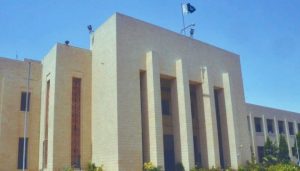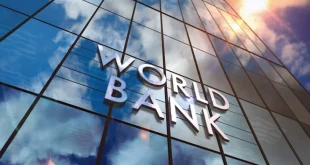Chief Minister’s budget speech acknowledged input from across the aisle, with opposition parties appreciating the tone of consensus

KARACHI, June 25 — Framed against the backdrop of economic uncertainty, climate volatility, and growing social needs, the Sindh government’s Rs3.45 trillion budget for FY 2025–26 reads less like a balance sheet and more like a statement of intent. It lays bare a vision—rooted in social inclusion, economic reform, and climate resilience—while also revealing the constraints of a province heavily reliant on federal transfers and volatile revenues.
This year’s budget, reflecting a 13 percent increase from last year’s outlay, marks a shift in tone: less populism, more purpose.
Social Protection: Putting People First
From the Rs8 billion Benazir Hari Card to Rs500 million women-led agriculture and SME initiatives, the budget sends a clear message—Sindh is looking to lift up its most vulnerable. The doubling of stipends for persons with disabilities and a 100 percent increase in assistive device distribution are more than token gestures—they signal a state attempting to align with rights-based governance and the Sustainable Development Goals (SDGs).
The allocation of Rs2 billion each for low-income housing and the Sindh Peoples Support Program also underscores a government aware of its widening urban-rural divide and the urgency to narrow it.
Education and Health: Investing in Human Capital
Education and healthcare remain front and center. With Rs42.2 billion earmarked for public universities, and Rs10.4 billion for medical education, the budget appears to pivot away from short-term populism towards long-term development. Flagship healthcare institutions such as SIUT (Rs21 billion) and NICVD (Rs23 billion) continue to receive robust support, suggesting continuity in service delivery priorities.
But this also opens up the question: Will investment alone correct systemic deficits in learning outcomes, or does the province require structural reform in curriculum, governance, and monitoring?
Tax Rationalization: Relief with Reform
Perhaps the most reformist feature is the rationalization of tax policy. The abolition of professional tax and doubling of the sales tax exemption threshold offer real relief to salaried workers and small businesses. In a province where fiscal space is limited, the government’s willingness to cut down outdated levies and modernize financial laws reflects an intent to build public trust and stimulate the informal sector.
The removal of cotton fees and drainage cess in response to declining agriculture shows the state is finally listening to climate-hit rural voices.
Green Priorities and Infrastructure
With Rs25 billion for green energy, Rs10 billion for the Dumloti–DHA water pipeline, and Rs3.1 billion for the Hub Canal, the government is stepping up to climate challenges. However, whether these investments are strategic enough to build resilience against recurring floods and droughts remains to be seen.
The emphasis on solar tube wells, drip irrigation, and super seeders aligns well with the province’s slow shift toward climate-adaptive farming—a necessity, not an option, as the effects of climate change tighten their grip.
The Political Subtext
Chief Minister Murad Ali Shah’s budget speech acknowledged input from across the aisle, with opposition parties appreciating the tone of consensus. Whether this is the beginning of a more consultative governance culture or merely post-budget civility will be tested over implementation.
The real challenge now lies in execution. With 62 percent of the budget going to current revenue expenditures and only 30 percent to development, and amid uncertainties over federal transfers, much will depend on bureaucratic efficiency and political will.
A Budget of Intention, Not Illusion
The Sindh Budget 2025–26 may not be revolutionary in numbers, but it is reflective in direction. By prioritizing people over politics, and reform over rhetoric, the provincial government has laid down a roadmap for inclusive development. Whether this roadmap leads to measurable change—or gets lost in the fog of bureaucracy and political expediency—will determine how future generations remember this moment.
 Radio News Network Radio News Network
Radio News Network Radio News Network
